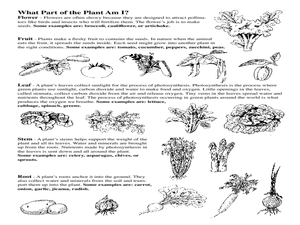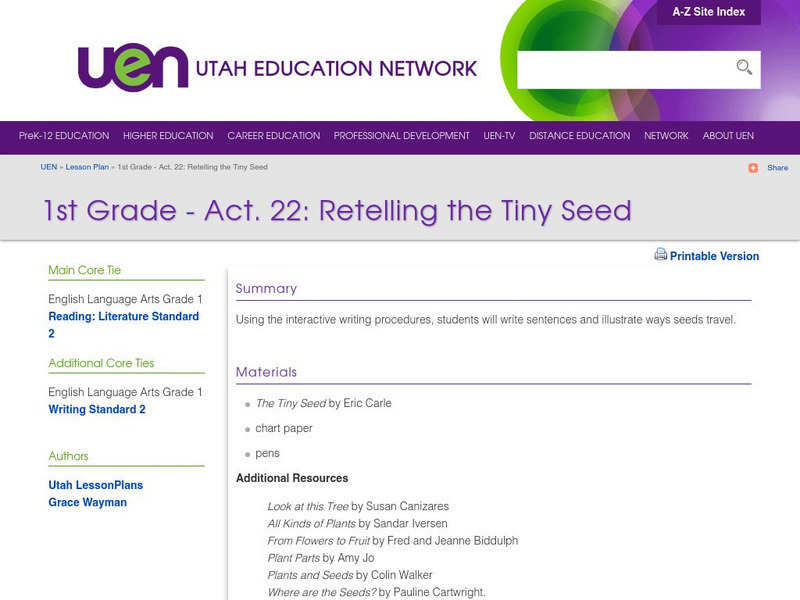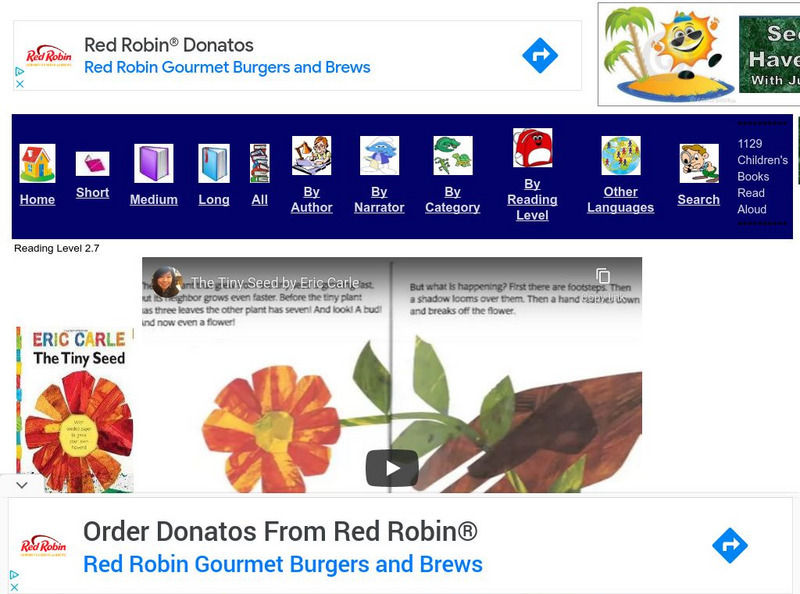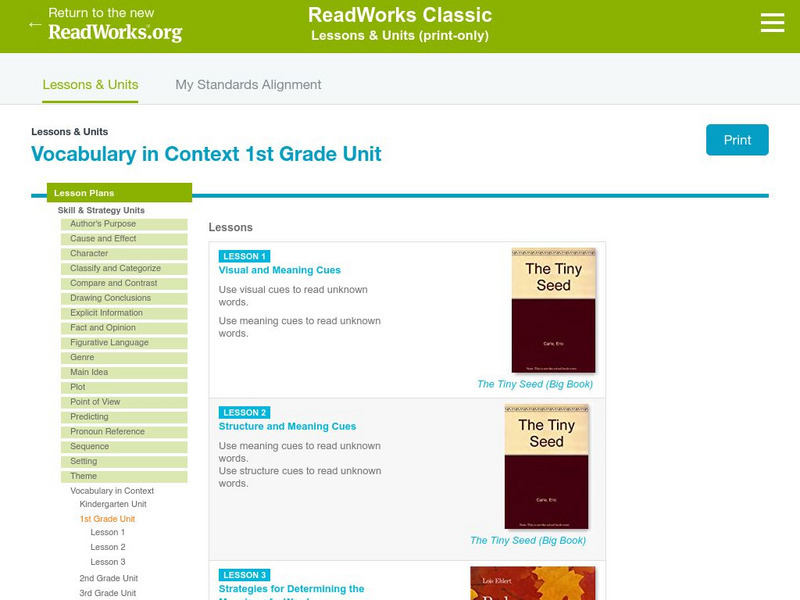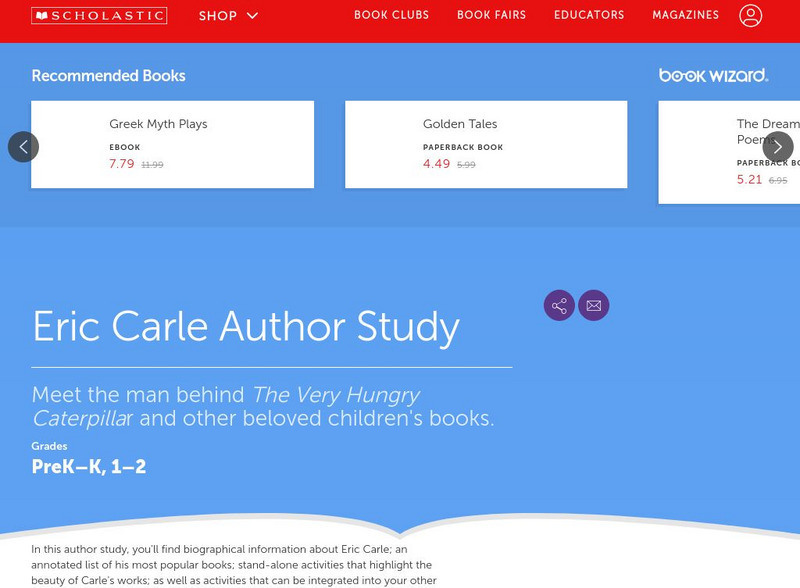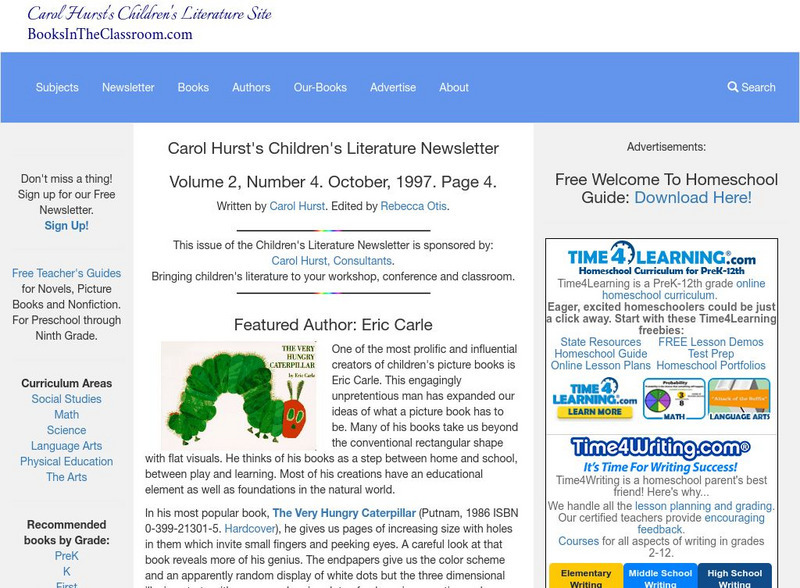Curated OER
Fossil Impressions of Ancient Life
Students make a mold using Plaster of Paris and then make a cast using that same mold. They pick a fossil and describe how it looks. They write a fictionalized story about its life, or burial. (
Curated OER
Tree Friends
Learners are introduced to tree structure and use. They identify their special tree using all senses except sight. Students identify six different internal parts within a cross section of tree trunk (bark, phloem, xylem, cambium,...
Curated OER
Lesson Nine: Size and Scale
Students investigate scale as it is related to maps. In this map instructional activity, students read Jack and the Beanstalk by Carol North. Students then compare the setting in the story to a landscape picture map to help them study...
Curated OER
Nouns and Adjectives
In this nouns and adjectives activity, students recognize nouns and adjectives. Students look at six sentences and pick out the adjectives, nouns used as adjectives, and nouns for each sentence.
Curated OER
Worksheet 7. Nouns and Verbs (Birds)
In this birds reading comprehension worksheet, students read a passage about birds and respond to 8 multiple choice questions regarding the paragraph. Some questions have more than 1 correct answer.
Curated OER
Rice Plants
Second graders investigate what plant is closely related to to rice. In this rice farming lesson, 2nd graders dicover the parts of rice and that rice is closely related to grass. Students create a rice picture and write sentences...
Curated OER
Grade 4 Language-Proficient 2
In this grade 4 language worksheet, 4th graders answer a set of 20 "proficient" multiple choice questions. Answers may be submitted and checked on-line.
Curated OER
Forest Food Web
Students explore the elements of a forest ecosystem. They examine the elements needed to form a forest food web. Students construct and describe food webs that include nonliving elements of the ecosystem.
Curated OER
Worming Your Way Through the Soil
Students study soil, living and non-living particles in the soil, and learn about composting. In this soil study lesson, students study soil samples and discuss the living and non-living components of the soil. Students classify the...
Curated OER
Using Metric Measurement at the Zoo
In this using metric measurement at the zoo worksheet, student solve twenty multiple choice problems about the weight and length of zoo animals using the metric system.
Curated OER
The Mystery of Easter Island and Commas
In this commas and Easter Island worksheet, students read three uses for commas in a box at the top of the paper. They punctuate 12 sentences properly by adding commas and periods where they belong.
Curated OER
Plants
Second graders examine the characteristics of plants. As a class, they brainstorm a list of items plants need in order to survive. In groups, they complete various experiments in which they discover the functions of the parts of the plant.
Curated OER
Plant Party
Young scholars identify plant parts. In this plants lesson, students bring in a vegetable. Each student classifies which part of the plant their vegetable comes from (flower, root, ect.) Young scholars identify the parts of their...
Curated OER
From Bolls To Bolts
Students investigate the concept of cotton manufacturing. The skills of setting statements in chronological order is developed. They are shown pictures of products and place them in order. The lesson includes background information for...
Curated OER
This Is Tree-rific!
Third graders view a clip of the video Backyard Safari, "Trees," and portray the life cycle of a tree. They also view a clip on structures of a tree and draw a diagram of a tree in their science journals.
Curated OER
IN STRAWBERRY FIELDS
The student will calculate wages of agricultural workers by the hour and by the piece.2. Share background material, and discuss the difference between gross pay and net pay and the difference between getting paid by the hour or the piece...
Utah Education Network
Uen: 1st Grade Act: 22: Retelling the Tiny Seed
This lesson engages students in story retelling to Eric Carle's book, The Tiny Seed. Students will participate in interactive storytelling as they write sentences and illustrate pictures about seed travel.
Just Books Read Aloud
Just Books Read Aloud: Eric Carle: The Tiny Seed
A video of the book "The Tiny Seed", written by Eric Carle. Just Books Read Aloud is a site that includes children's books read aloud by normal (but enthusiastic) readers.
Science Buddies
Science Buddies: Gone With the Wind: An Experiment on Seed and Fruit Dispersal
If you have ever made a wish and blown the fluff of a dandelion, you have witnessed how some plants are adapted to spreading their seeds using the wind. The tiny, furry parachute allows the seeds to be picked up by the wind and to be...
Read Works
Read Works: Vocabulary in Context 1st Grade Unit
[Free Registration/Login Required] This website provides a series of three lesson plans designed to teach students to use visual, meaning, and structure clues separately and together to determine the meaning of unknown words. Lessons are...
Other
Biographical Notes for Eric Carle
Eric Carle is acclaimed and beloved as the creator of brilliantly illustrated and innovatively designed picture books for very young children. His best-known work is the familiar "The Very Hungry Caterpillar".
Scholastic
Scholastic: Teachers: Eric Carle Author Study
Here both students and teachers can learn about writer Eric Carle, the author of The Very Hungry Caterpillar and many other works for children. Includes video [3:39] Also offers teaching ideas, including themes for discussion.
Books in the Classroom
Carol Hurst's Children's Literature Site: Eric Carle
What do you know about Eric Carle, the author? This Carol Hurst site highlights some interesting facts about this author's life and refers to some of his books.
ClassFlow
Class Flow: Plants Are Alive
[Free Registration/Login Required] This flipchart accompanies Eric Carle's book, The Tiny Seed.












